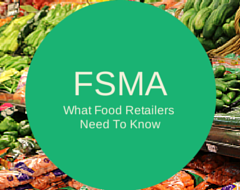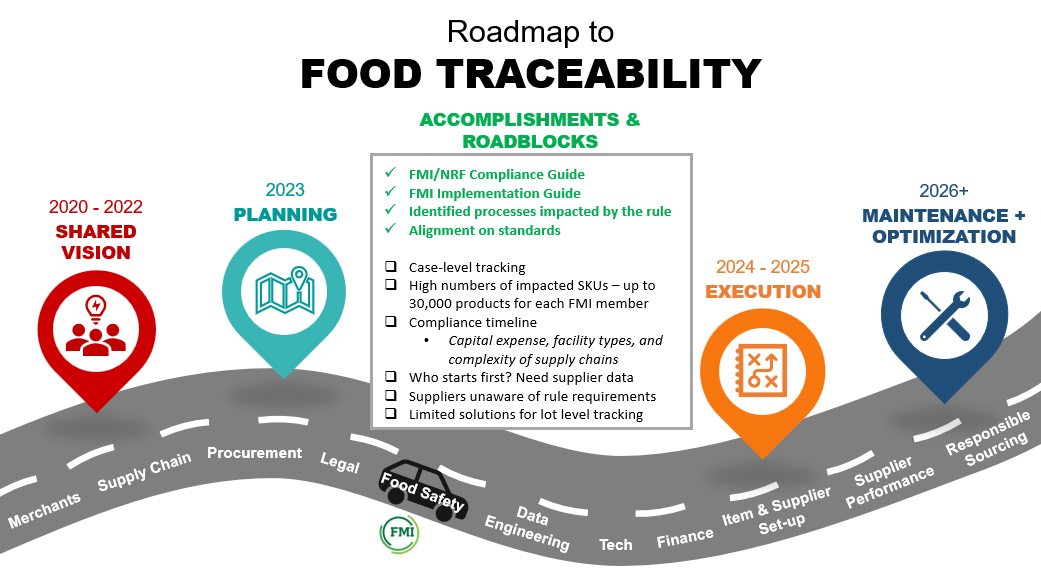Standards for the Growing, Harvesting, Packing and Holding of Produce
This post is part of a series on What Food Retailers Need to Know about the Food Safety Modernization Act.
By: Stephanie Barnes, Regulatory Counsel, Food Marketing Institute 
We all know that produce is an essential component of a balanced diet, and the safe production and harvesting of fruits and vegetables helps us maintain healthy diets. Over the last decade, foodborne illness outbreaks associated with contaminated produce led to widespread recognition that we need a proactive, modern food safety system that prevents food safety problems instead of reacting to outbreaks. Congress recognized this and reacted by including produce safety standards in the Food Safety Modernization Act (FSMA).
FSMA mandates that FDA establish science-based, minimum standards for the safe growing, harvesting, packing, and holding of produce on farms to minimize contamination that could cause serious adverse health consequences or death. The requirement to establish mandatory produce safety standards, using a risk-based approach represents a significant shift in the regulatory framework for fresh produce. For the first time, FSMA requires FDA to regulate what occurs on a farm. As one can imagine, the proposed rule has created significant controversy in the growing community who have been farming for generations without FDA oversight.
What items are included in the rule?
Not all farms’ produce is covered by the proposed rule. FDA has provided a non-exhaustive list of covered produce and an “exhaustive” list of produce that is not covered. The produce items covered by the new safety standards include fresh fruits and vegetables, mushrooms, sprouts, peanuts and tree nuts. Items that are rarely consumed raw or produce destined to a kill step are not covered under the proposed rule. The produce safety standards are applicable to imported as well as domestic products. Under the Foreign Supplier Verification Program, importers would be required to perform certain risk-based activities to verify that food imported into the United States has been produced in a manner that provides the same level of public health protection as that required of domestic food producers.
What’s required?
The proposed produce safety rule establishes science-based minimum standards for the safe production and harvesting of fruits and vegetables and addresses soil amendments, worker health and hygiene, packaging, temperature controls, water, and other issues.
The produce safety rule is definitely a step in the right direction for food safety. The proposed changes raise the bar for both domestic and foreign farms. FMI has also developed a produce safety guide as retailers work with supply chain partners. The guide establishes a step-based program for all farms—including small farms—in which training materials are available to strengthen the food safety program. The goal is to develop or build on existing food safety programs and to continuously improve through knowledge gained from emerging science and produce safety events. This document can serve as best practice guidelines for a retailer supplier approval list.
The FDA is proposing staggered compliance dates, based on the size of the farm, to provide enough time for them to meet the requirements, and additional time is being provided to meet certain water requirements. Exemptions in the produce safety rule are also included for the smallest farms. Final rules are expected in October 31, 2015. For more resources, including FMI’s comments, visit our FSMA Resources webpage.


 Industry Topics address your specific area of expertise with resources, reports, events and more.
Industry Topics address your specific area of expertise with resources, reports, events and more.
 Our Research covers consumer behavior and retail operation benchmarks so you can make informed business decisions.
Our Research covers consumer behavior and retail operation benchmarks so you can make informed business decisions.
 Events and Education including online and in-person help you advance your food retail career.
Events and Education including online and in-person help you advance your food retail career.
 Food Safety training, resources and guidance that help you create a company food safety culture.
Food Safety training, resources and guidance that help you create a company food safety culture.
 Government Affairs work — federal and state — on the latest food industry policy, regulatory and legislative issues.
Government Affairs work — federal and state — on the latest food industry policy, regulatory and legislative issues.
 Get Involved. From industry awards to newsletters and committees, these resources help you take advantage of your membership.
Get Involved. From industry awards to newsletters and committees, these resources help you take advantage of your membership.
 Best practices, guidance documents, infographics, signage and more for the food industry on the COVID-19 pandemic.
Best practices, guidance documents, infographics, signage and more for the food industry on the COVID-19 pandemic.
